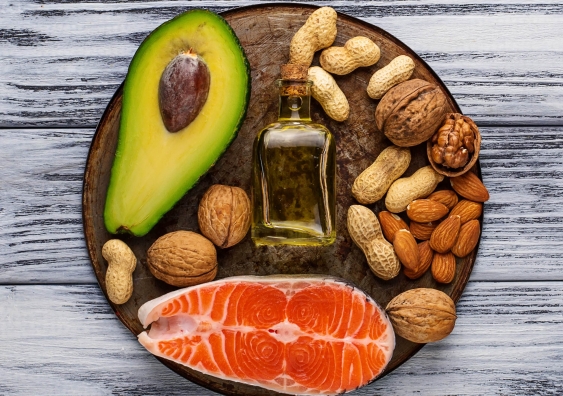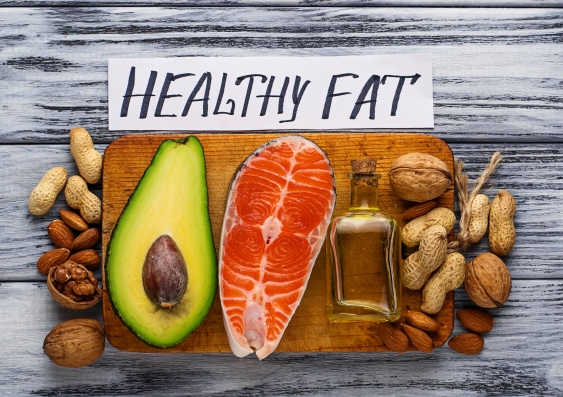Should we still be choosing fat-free over full-fat products?
Are products with fat-free, reduced fat, low fat, or 'lite' labels always healthier, asks Rebecca Reynolds.
Are products with fat-free, reduced fat, low fat, or 'lite' labels always healthier, asks Rebecca Reynolds.

OPINION: Light or “lite”, 99% fat-free, reduced fat, low fat, less fat, reduced calorie, low calorie, lean, extra lean – are products with these labels always healthier?
First, let’s talk about fat. Fat in foods and drinks is either unsaturated (monounsaturated or polyunsaturated, the latter as omega-3 or -6), saturated or trans-saturated (trans-fats).
These differ based on their chemical structures and properties, including whether they are “saturated” with more hydrogen molecules and are liquid or solid at room temperature. They also differ in their effects on human health.
In the early to mid-1900s, discoveries about the energy value of different macronutrients led to the establishment of “Atwater Factors”. These are standardised values of how much energy, or kJ/kcal/calories, a nutrient such as fat or carbohydrate provides to the human body.
Fat was assigned the highest value of 37 kilojoules per gram, indicating it provides the most energy per weight unit (gram) to the human body out of all the macronutrients (more than carbohydrates, protein and alcohol). As it was the most energy-dense, this contributed to a belief that a high-fat diet would lead to weight gain.
Then, around the mid-1900s, various research studies were published about fat and human health, particularly regarding cardiovascular health. A scientist called Ancel Keys and others reported findings of the Seven Countries Study, including a statistical association in population data from seven countries between eating saturated fat and trans fat and an increased risk of coronary heart disease.
Even though the detrimental effects on heart health were not attributed to unsaturated fats in this example study, unfortunately a general feeling of malaise towards all types of fat mostly strengthened. I say mostly because there were some movements from around the 1970s onwards that advocated a high-fat, low-carb way of living – such as the Atkins Diet.
These ongoing “fat is bad” messages led to an explosion in fat-free or reduced-fat food products and marketing that still persists today.
Worldwide, there has been variation in when governments or organisations have issued dietary guidelines for their populations. The Australian Dietary Guidelines were first issued in 1982, in the United States in 1980 and in the United Kingdom in 1994.
Most of the advice has included care with total fat intake, avoidance of saturated and trans fat and a mostly monitored consumption of “healthier” unsaturated fats.
Current Australian Dietary Guidelines (2013) are similar to previous ones regarding fat, and mirror the current advice given by many countries across the globe. The main message is to be careful of overall fat intake due to its energy density and the current issue of excess weight and obesity, but be particularly careful of saturated and trans fat intake because of their detrimental effects on cardiovascular health.
They usually also recommend the more “pure” unsaturated fats in moderation as there is evidence unsaturated fats have health benefits, but again, there is the high energy-density issue.

Unsaturated fats are energy dense, but they have health benefits (Photo: Shutterstock)
This translates to eating high protein and dairy food options such as lean meats, fish, some nuts and reduced-fat dairy; eating high unsaturated fat foods such as nut butters and olive oil in small amounts; and avoiding foods high in saturated fats and trans-fats such as butter, coconut oil and processed foods like biscuits.
So, is this what we should be doing, and what does the future hold for fat?
The history of dietary fat advice and the belief that it may be a demon means we have lots of processed carbohydrate options in our supermarkets and food outlets. These are mostly low in fibre (fibre is a great thing for most bodies) and high in glycemic index (which is a bad thing for most bodies).
No, rice crackers are not a good food, even though they may be 99% fat-free. No, flakes made from corn are not a good food, even though they may be low in fat. No, reduced-fat yoghurt with grams and grams of added sugar is not the best yoghurt option. However, many of us see such fat claims and automatically assume the product is healthy.
The Australian Dietary Guidelines are based on a thorough analysis of the best available evidence. They advise what they should at this stage in nutrition science. However, there are problems with nutrition evidence. It is notoriously hard to measure what a person eats – diet is vastly more complex than whether a person smokes or doesn’t smoke, for example.
There is also bias in the reporting of research, over-ambitious conclusions of causation from association, and focus on single nutrients and foods instead of dietary patterns.
Perhaps nutrition evidence regarding fat will evolve in the future so that the guidelines become slightly modified. Some possibilities are:
Don’t be fooled by 99% fat-free labelling and do choose lean or extra lean meat cuts. Follow the Australian Dietary Guidelines in general, but perhaps make some small tweaks in anticipation of a potentially new nutrition evidence future.
This includes choosing lower GI carbohydrate foods (oats instead of wheat biscuits), eating some full-fat dairy (such as Greek yoghurt) and eating more extra virgin olive oil and nuts.
Dr Rebecca Reynolds is a Lecturer in Nutrition at UNSW. This opinion piece was first published in The Conversation.